Introduction To Cattle Ranching
Have you ever wondered about the vast herds of cattle that roam the countryside? Cattle ranching has been a significant part of agriculture for centuries, and it remains an essential industry to this day. Cattle are raised for their meat, milk, and labor, and ranching them is an intricate process that requires specific knowledge and skills.
The domestication of cattle is believed to have started around 8000 years ago, originating from wild oxen found in the Middle East. These animals were used for their milk, meat, and hides and were vital to the survival of many ancient civilizations. Today, there are over 1 billion head of cattle worldwide, and the practice of cattle ranching has spread across the globe.
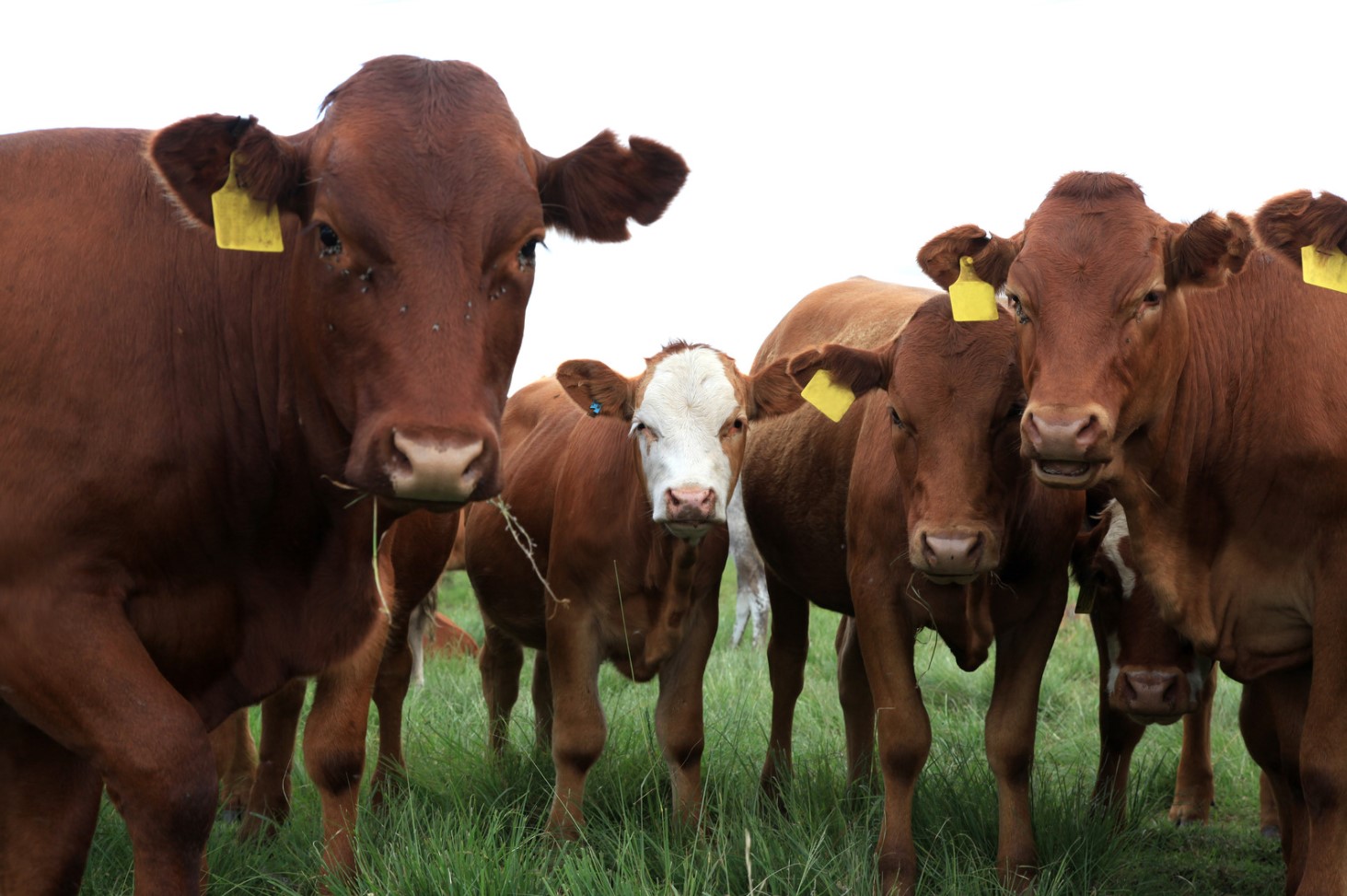
- Angus
- Hereford
- Simmental
- Jersey
There are many different types of cattle breeds, each with unique characteristics suited for a particular purpose. The Angus breed is a popular choice for meat production, while the Jersey breed is preferred for dairy products like milk and cheese. Understanding the anatomy of cattle is also essential for their care and well-being. Cattle have a four-chambered stomach, and their digestive system is designed to digest fibrous materials.
| Common Diseases | Symptoms | Treatment |
|---|---|---|
| Bovine Respiratory Disease | Coughing, fever, nasal discharge | Antibiotics and anti-inflammatory medications |
| Mastitis | Swollen udder, fever, decreased milk production | Antibiotics and proper hygiene |
As with any livestock, cattle can be susceptible to various diseases. Bovine Respiratory Disease and Mastitis are common illnesses that ranchers must be vigilant for. Proper breeding and genetics can also improve the quality and productivity of the herd. Cattle ranching and farming are essential industries that provide food and raw materials for various products.
Cattle are valuable creatures that must be cared for properly to ensure their health and productivity. Understanding the basics of cattle ranching is a crucial first step in this process. From their origins to the different breeds and anatomy, there is much to learn about these fascinating creatures.
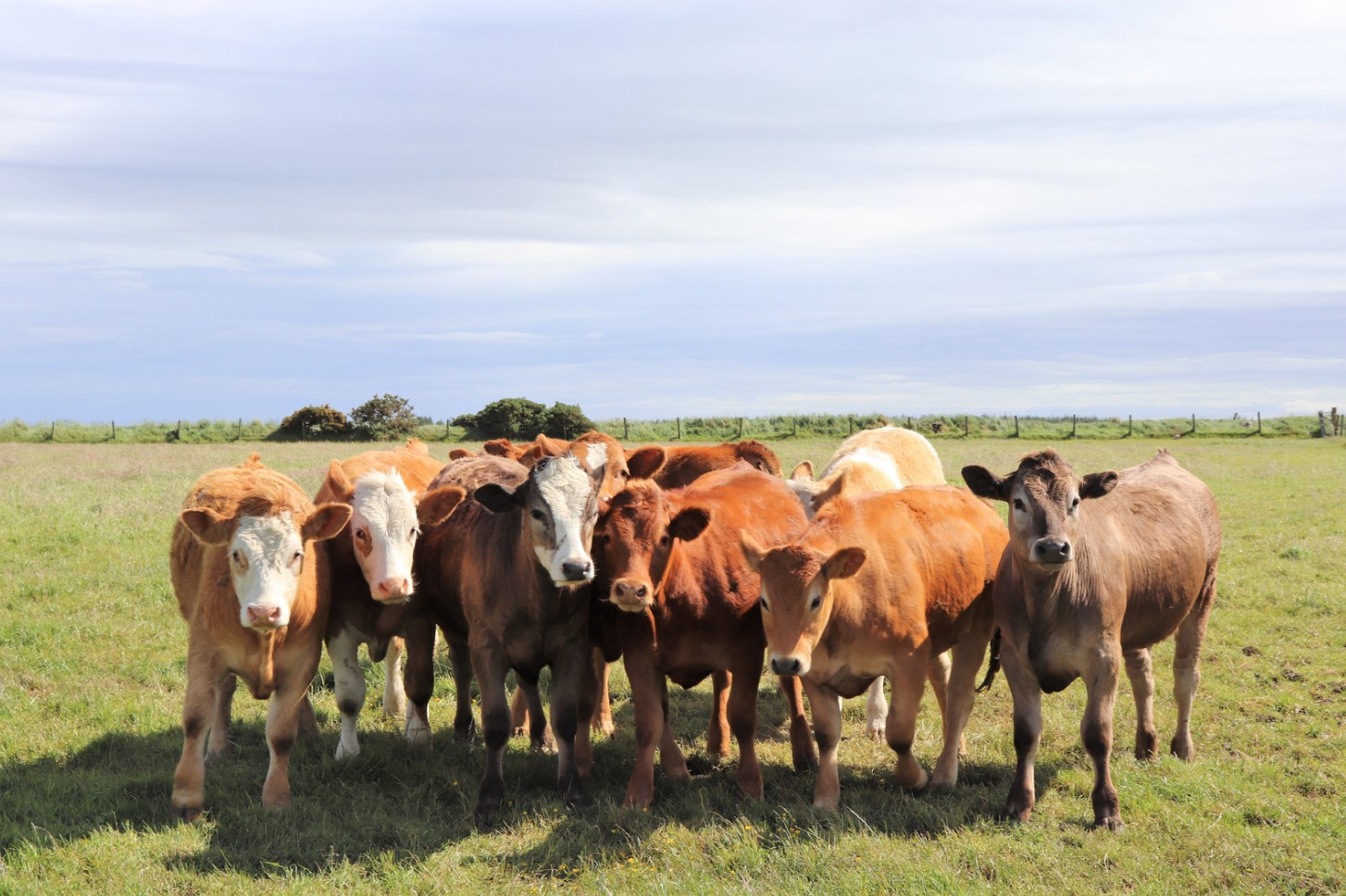
The Origins Of Cattle Domestication
The origins of cattle domestication can be traced back to around 8000 – 9000 BC, when humans started to domesticate wild cattle for their own use. Cow domestication was a significant milestone in human history, as it allowed people to shift from a hunting and gathering lifestyle to a more settled, agricultural lifestyle. Domesticated cattle were eventually used for a variety of purposes, such as milk, meat, and transportation, and their importance to human societies only continued to grow over time.
There are several theories as to where domesticated cattle originated from. One theory suggests that domestication occurred in multiple regions simultaneously, while another posits that it occurred in a single location and then spread to other regions. Regardless of where it originated, it is clear that domesticated cattle were present in many regions of the world by the time of the ancient civilizations such as Babylonian, Egyptian and Indian.
The domestication of cattle not only changed the way that humans lived, but also the way that cattle lived. Through selective breeding, humans were able to create different types of cattle breeds, each with their own unique characteristics and uses. Over time, cattle have been bred for different purposes, such as dairy or beef production. The features of cattle also vary depending on the climate and terrain of the regions in which they were bred, creating different breeds that are more suited to different environments.
| Type of Cattle Breed | Use | Example |
|---|---|---|
| Beef Cattle | Meat Production | Angus, Hereford, Charolais |
| Dairy Cattle | Producing Milk | Holstein-Friesian, Guernsey, Jersey |
| Dual-Purpose Cattle | Beef and Milk Production | Brahman, Brown Swiss, Simmental |
Overall, the origins of cattle domestication were a turning point for human civilization, paving the way for a more settled, agricultural lifestyle. Since their domestication, cattle have been bred for a variety of specific purposes, creating the different breeds that we recognize today. Understanding the history of cattle domestication is an important part of understanding their role in human society and the world as a whole.
Different Types Of Cattle Breeds
When it comes to cattle ranching, there are a variety of different breeds to choose from. Each breed has its own unique characteristics that make them better suited for certain purposes. Here are some of the most common types of cattle breeds:
- Angus: One of the most popular beef cattle breeds, Angus are known for their marbled meat and gentle disposition. They are a black breed that originated in Scotland and are often used in crossbreeding.
- Hereford: Another popular beef cattle breed, Herefords are known for their hardiness and adaptability. They are a red and white breed that originated in England and are often used in grass-fed operations.
- Jersey: A smaller breed of dairy cattle, Jerseys produce milk with a high butterfat content. They are a light brown breed that originated in the Channel Islands and are often used in small-scale dairy operations.
In addition to these breeds, there are many others to choose from, including Holsteins, Charolais, and Brahman. It’s important to choose a breed that fits your specific needs and goals when it comes to cattle ranching.
| Breed | Purpose | Origin |
|---|---|---|
| Angus | Beef | Scotland |
| Hereford | Beef | England |
| Jersey | Dairy | Channel Islands |
As you can see, there is a lot to consider when it comes to choosing the right breed of cattle for your ranch. Whether you’re looking for beef or dairy cattle, there is a breed out there that will meet your needs. Do your research and make an informed decision before making any purchases, as this can greatly impact the success of your cattle ranching operation.
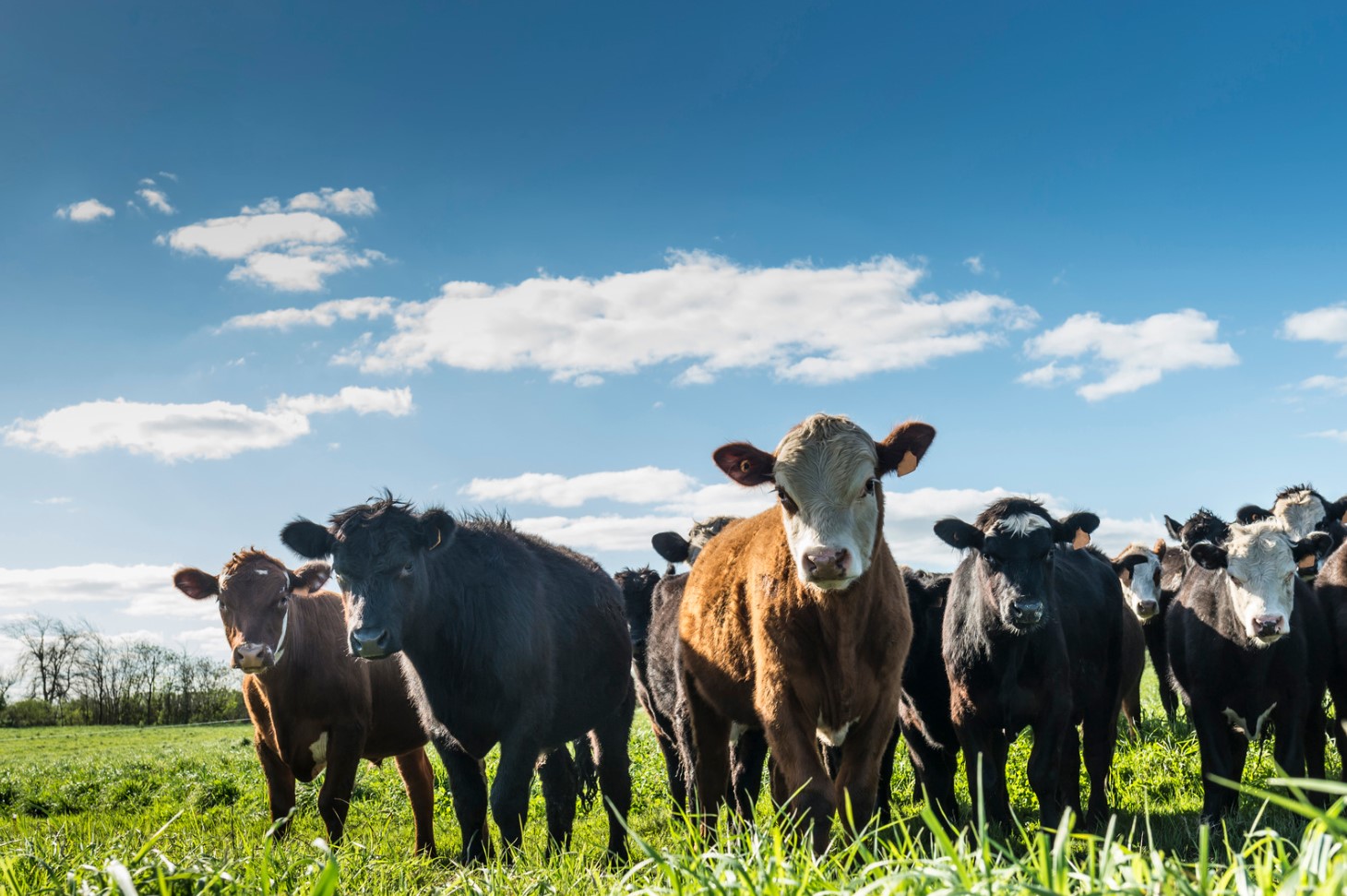
Understanding The Anatomy Of Cattle
Cattle are fascinating creatures that have been domesticated for thousands of years to help humans with various tasks, such as transportation, farming, and as a source of food. Understanding the anatomy of cattle is essential to proper care and management of these animals. The anatomy of cattle is complex, and it is important to know the different parts that make up these magnificent beasts.
- Skeletal system: The skeletal system of cattle is similar to other mammals, consisting of bones, ligaments, and joints. Cattle have a sturdy and robust skeletal system, which supports their weight and allows them to move with ease.
- Muscular system: The muscular system of cattle is well-developed and is responsible for their movement and strength. The muscles in the neck and the back are particularly strong, allowing cattle to carry heavy loads or pull carts.
- Nervous system: The nervous system of cattle is made up of the brain, spinal cord, and nerves. This system is responsible for coordinating various functions and movements in cattle, including movement, breathing and digestion.
The digestive system of cattle is unique, and allows them to break down and extract nutrients from tough plant materials that other animals cannot digest. Cattle have a four-compartment stomach, which includes the rumen, reticulum, omasum, and abomasum. The rumen and the reticulum work together to break down the tough plant material through a process called fermentation.
| Part of Cattle | Function |
|---|---|
| Skeletal System | Supports the weight of cattle and allows them to move with ease |
| Muscular System | Responsible for cattle’s movement and strength |
| Nervous System | Coordinates various functions and movements in cattle |
| Digestive System | Breaks down and extracts nutrients from tough plant materials |
Overall, understanding the anatomy of cattle is crucial for proper care and management of these animals. Knowing how their body works can help us identify potential problems early and provide treatment. Cattle are an essential part of the agricultural industry and contribute significantly to the food chain. Therefore, it is important to care for them properly so that they can continue to thrive and benefit humans.
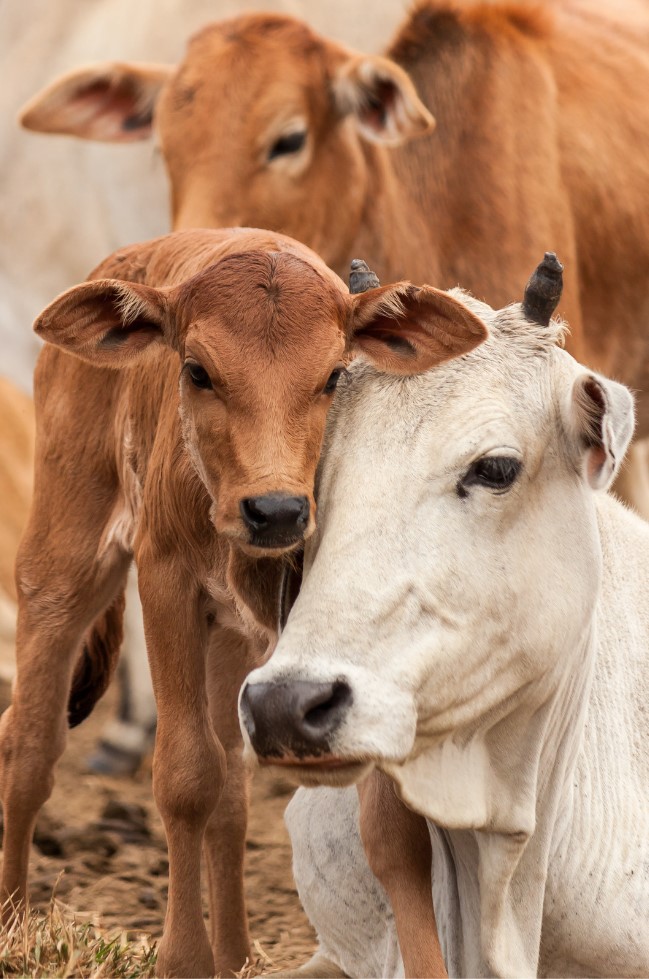
The Importance Of Breeding And Genetics
When it comes to cattle ranching, breeding and genetics are two of the most important factors that determine the quality of the herd. Breeding is the process of selecting the best animals with desirable traits to reproduce and improve the overall genetic makeup of the herd. Genetics, on the other hand, is the study of how traits are passed on from one generation to another. Understanding these concepts is crucial for cattle farmers who want to maximize the potential of their herds.
One of the main benefits of breeding and genetics in cattle ranching is improving the quality of the meat and milk produced by the animals. By carefully selecting the best specimens for breeding, farmers can create herds that are better adapted to their environment, more resistant to common diseases, and more productive overall. In addition, breeding programs can be used to enhance specific traits like marbling, tenderness, and flavor in beef, or milk yield and fat content in dairy cows.
- There are several methods used to improve the genetics of a cattle herd, including:
- Artificial insemination – using semen from high-quality bulls to impregnate cows
- Embryo transfer – transferring embryos with desirable traits to surrogate cows
- Genetic testing – analyzing the DNA of individual animals to identify desirable traits and eliminate genetic defects
Another important aspect of breeding and genetics in cattle ranching is sustainability. A well-managed breeding program can help reduce the environmental impact of cattle farming by producing more efficient and resilient animals with lower carbon footprints. By selecting for traits like feed efficiency, disease resistance, and drought tolerance, farmers can create herds that require less resources to maintain and produce less waste.
| Benefits of Good Breeding and Genetics |
|---|
| Higher quality meat and milk |
| More productive and efficient herds |
| Improved sustainability in cattle farming |
In conclusion, breeding and genetics are vital components of successful cattle ranching. By carefully selecting and breeding the best animals, farmers can improve the traits of their herds and produce higher quality meat and milk. Moreover, sustainable breeding practices can help mitigate the environmental impact of cattle farming and create more efficient, less resource-intensive herds. For these reasons, cattle farmers should prioritize good breeding and genetics in their operations.
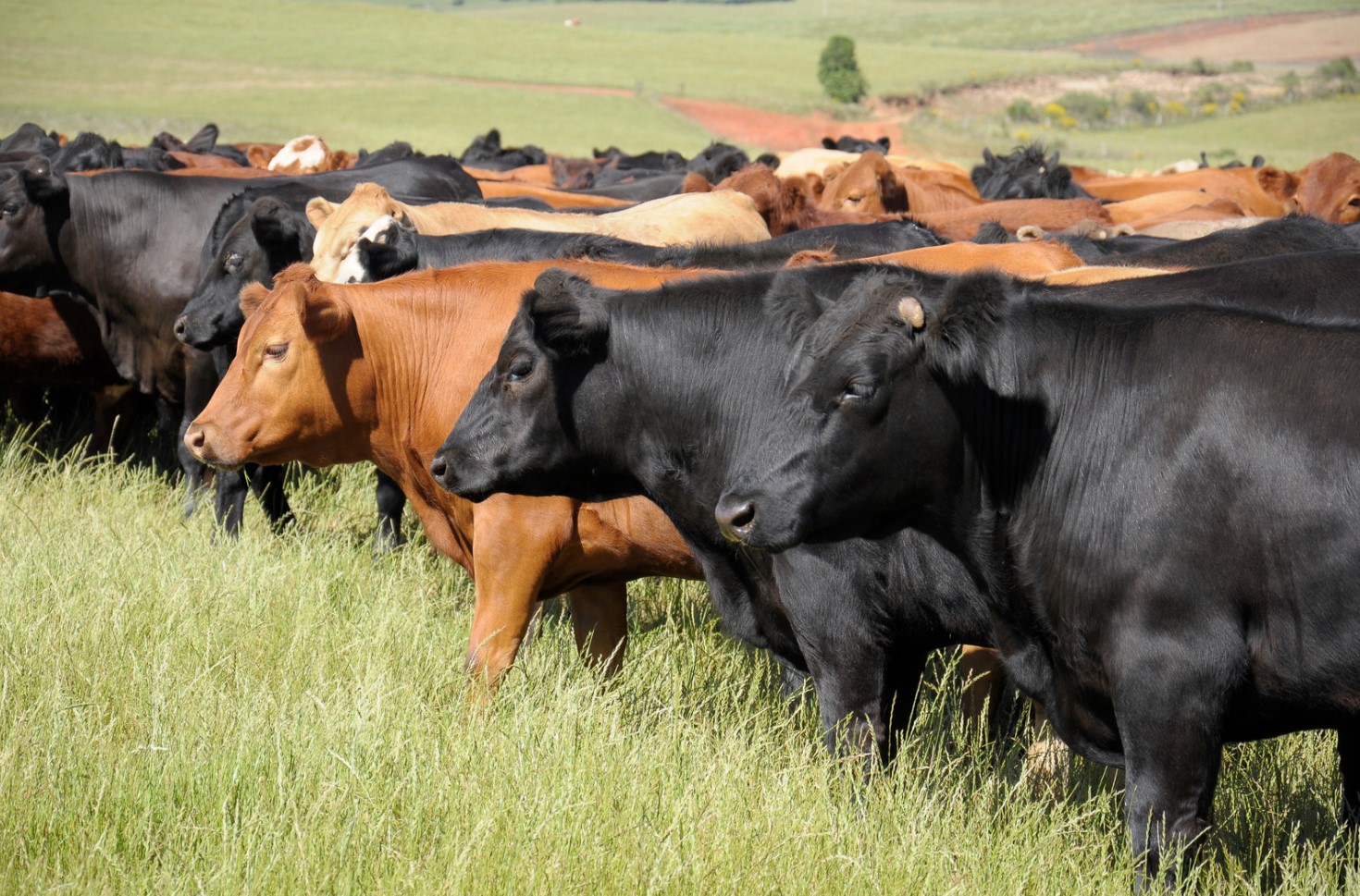
Identifying Common Cattle Diseases
As a cattle rancher or farmer, one of the most important aspects of taking care of your animals is ensuring that they remain healthy. Unfortunately, like any living being, cattle are prone to illnesses and diseases that can have a major impact on their well-being.
Identifying common cattle diseases is crucial in order to prevent the spread of these conditions throughout your herd. Some of the most prevalent conditions that affect cattle include:
- Mastitis: A bacterial infection that affects the udder of lactating cows, causing inflammation and potentially even leading to decreased milk production.
- Bovine respiratory disease (BRD): A condition caused by a variety of different bacterial and viral agents that can impact the respiratory health of your cattle, leading to coughing, lethargy, and even death in severe cases.
- Foot and mouth disease: A highly contagious viral disease that causes blisters and sores on the feet and around the mouth of cattle. This disease is extremely dangerous and can lead to significant economic losses in the agriculture industry.
Prevention is key when it comes to managing and mitigating the effects of common cattle diseases. There are many steps that you can take to ensure that your herd remains healthy, including:
- Implementing strict biosecurity protocols to ensure that diseases are not introduced into your herd.
- Properly vaccinating your cattle against common diseases.
- Providing your cattle with a clean and comfortable living environment, including clean water and nutritious feed to boost their immune systems.
- Regularly testing your cattle for common diseases and treating any illnesses as soon as they are identified.
By taking these steps and staying vigilant about common cattle diseases, you can help ensure that your herd remains healthy and productive for years to come.
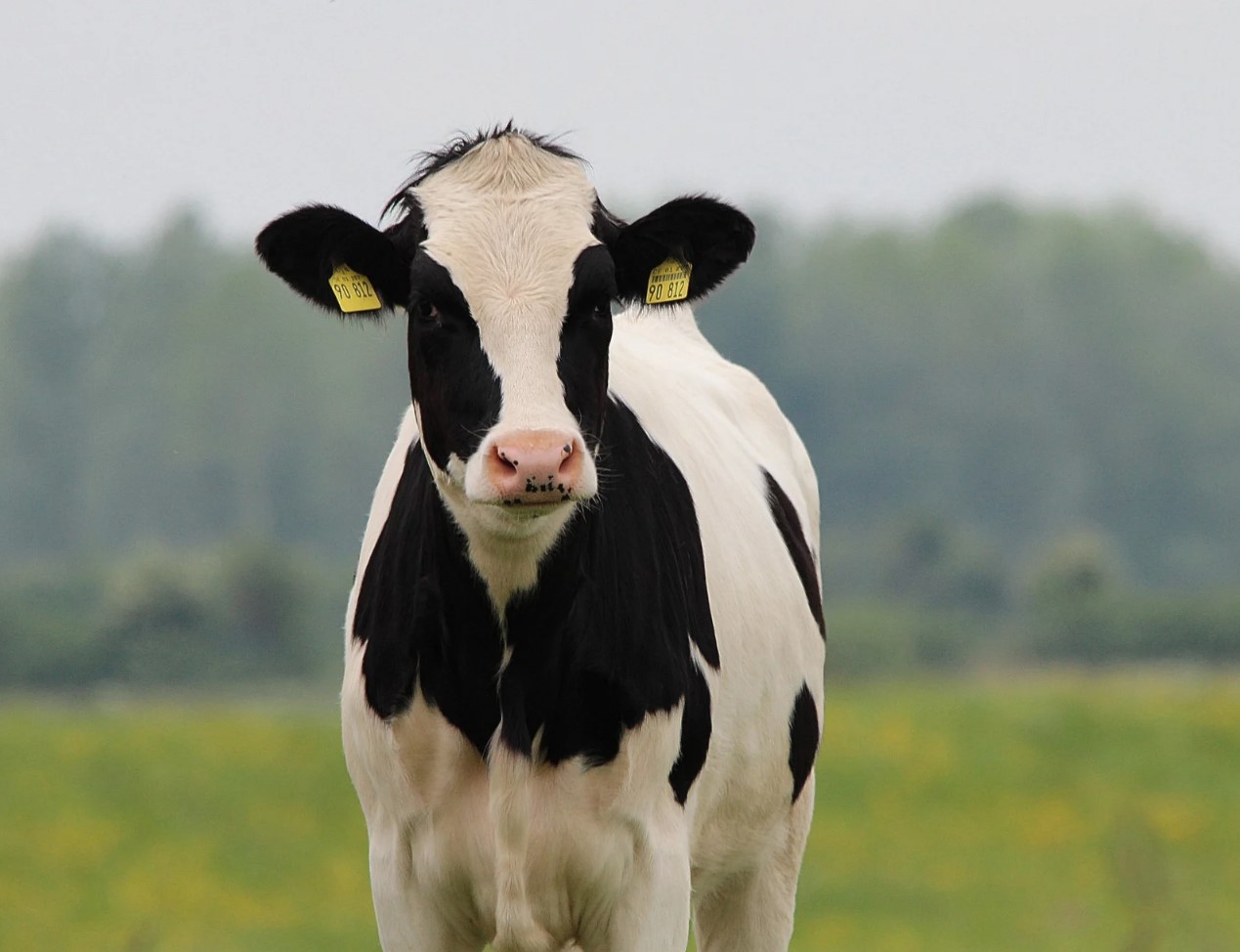
Tips For Caring For Your Cattle
As a cattle farmer, it’s so important to understand how to properly care for your cattle in order to ensure a healthy and productive herd. Here are some tips for caring for your cattle:
- Provide proper nutrition: Cattle need a consistent and balanced diet in order to stay healthy. This includes providing them with enough hay or pasture, grains, and minerals.
- Keep their living space clean and comfortable: It’s important to keep your cattle’s living space clean in order to prevent disease and parasites. Additionally, you should ensure that their living space is comfortable and provides enough room for them to move around.
- Get them vaccinated: Vaccinations can help prevent many common cattle diseases. Be sure to work with a vet to determine which vaccinations your herd needs.
- Monitor their health: Keeping a close eye on your herd’s health can help you catch any issues early on. This includes regularly checking their eyes, ears, nose, and mouth, as well as watching for changes in behavior.
- Create a breeding plan: Developing a breeding plan can help you ensure a healthy and productive herd. This includes selecting healthy, high-quality breeding stock and monitoring the genetics of your herd over time.
By following these tips and working closely with a vet, you can help ensure that your cattle stay healthy and productive for years to come.
Understanding The Cattle Industry
Cattle Industry 101: Understanding the cattle industry can be the first step towards successful cattle ranching, higher yields and a better understanding of the agricultural sector. The cattle industry is all about the production and trade of cattle and beef products. It encompasses a wide range of activities such as cattle breeding, production, processing, and marketing.
The Market: The demand for cattle and beef has been steadily increasing over the years, and as one of the oldest and most popular forms of livestock, cattle play a crucial role in the agricultural sector. The cattle industry generates over $100 billion annually, and cattle farming is a major economic activity in many countries. The market for cattle and beef varies widely by region and influenced by factors such as population growth, disposable income, and the health benefits of consuming beef products.
The Process: The cattle industry is a complex web that starts with the breeder, who selects the best bulls and cows from the best bloodlines in the market. After that, a series of steps follow, including feeding, animal health management, and transportation, which are all essential to maximize the yield. For example, proper breeding helps to improve the quality of the meat, while the right feeding regimen ensures the animal is strong and healthy. Best practices can also help to improve the yield from each animal, in turn, benefiting the rancher.
- Cattle Breeds: There are several breeds of cattle available in the market, each with its own set of unique characteristics. Understanding different breeds can help you choose the right animal, depending on what you want to produce.
- Cattle Management: Proper management of cattle is key to success in the cattle industry. This includes providing nutrition, managing herd health, and monitoring changes in the market.
- Cattle Slaughter: Once the animal has completed its growth cycle, it is then ready for processing. At this stage, the animal is inspected and processed into beef products that go into the food chain.
In Conclusion: Understanding the cattle industry is essential for anyone interested in cattle farming to succeed in this industry. To get the best out of the cattle, proper breeding, health management, and maintenance of the animal is crucial. By combining these aspects with a good understanding of the market and an appreciation of best practices, it is possible to make cattle farming a profitable venture.
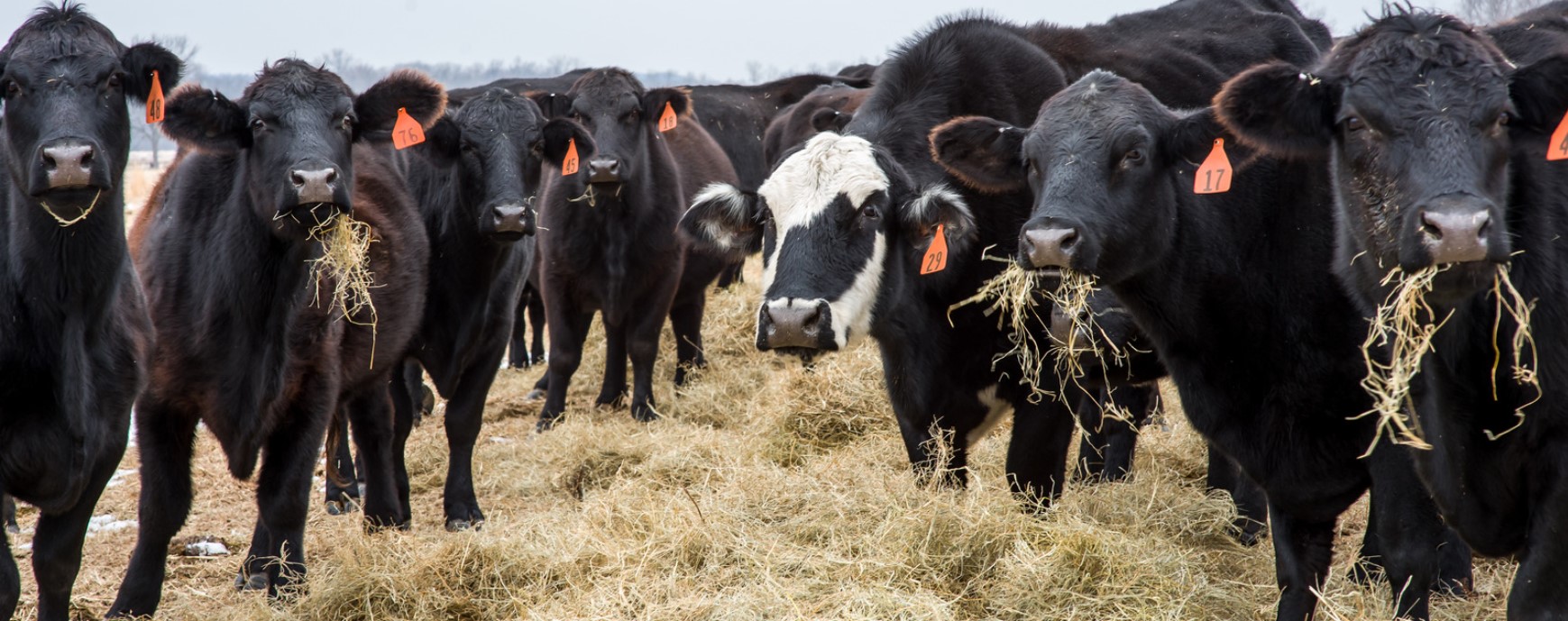
The Role Of Cattle İn Agriculture
When it comes to agriculture, cattle play a significant role. They are raised for their meat, milk, and even their skin. Cattle are also used for plowing and transportation in some parts of the world. But how exactly do they contribute to agriculture?
One of the main ways that cattle are used in agriculture is for meat production. In fact, beef is one of the most commonly consumed meats in the world. Cows are raised on farms and ranches specifically for this purpose. Once they reach a certain weight, they are sent to a meat processing facility where they are slaughtered and processed. The meat is then packaged and shipped to supermarkets and restaurants worldwide.
- In addition to meat, cattle are also raised for their milk. Dairy cows are kept on dairy farms where they are milked regularly. The milk is then used to produce a variety of dairy products such as cheese, yogurt, and butter.
- Cattle are also used for plowing fields in some parts of the world. Although this practice has become less common in modern times with the advent of tractors and other machinery, it is still used in some rural areas where modern agricultural equipment is not readily available.
Another way that cattle contribute to agriculture is through their manure. Cow manure is an excellent fertilizer and is often used to enrich soil in farms and gardens.
| Cattle Contribution | Examples |
|---|---|
| Meat production | Beef, hamburgers, steak |
| Milk production | Cheese, yogurt, butter |
| Plowing | In some rural areas |
| Manure | Fertilizer for crops and gardens |
When it comes to agriculture, cattle play a very important role. From meat and milk production to plowing and fertilizing, these animals are essential to the industry. It is important that we continue to raise them in a sustainable and ethical manner to ensure that we can continue to benefit from their contributions for generations to come.
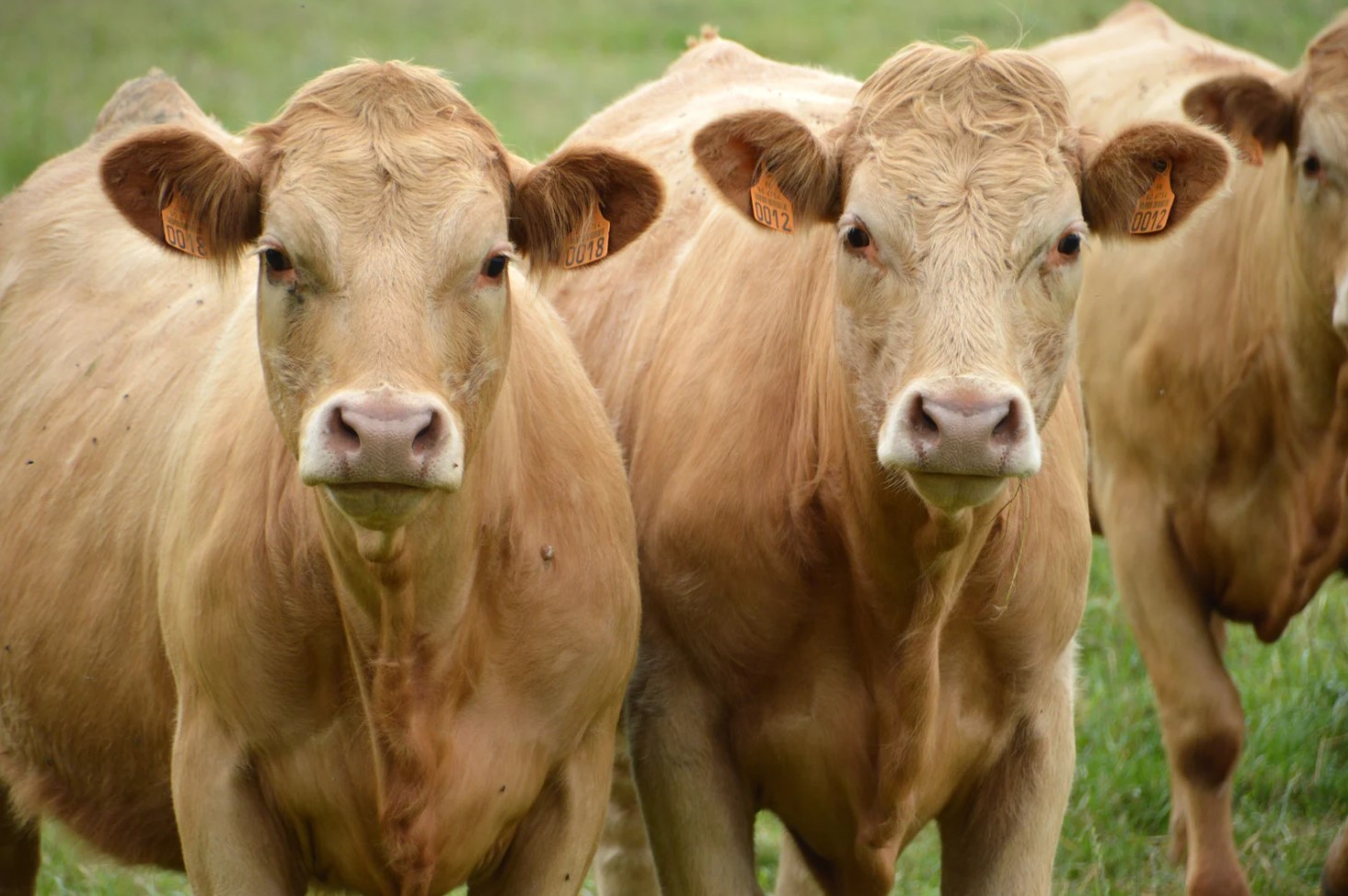
How Cattle Contribute To The Food Chain
Cattle are one of the most essential domesticated animals in the world, and they are also one of the most important contributors to the global food chain. These bovine creatures have been serving humanity for thousands of years, providing us with milk, meat, and leather. Cattle are also being used to produce manure and fuel, which further adds to their significance in the food industry.
Today, cattle are being bred and raised all over the world for their meat, and the demand for beef is growing rapidly. Cattle on a large scale are being raised in feedlots, which makes their breeding much easier, but it also poses some environmental problems. However, cattle that are being raised on open pastures are usually healthier, and their meat tends to be tastier and more nutritious.
Cattle are primarily kept for the production of beef, which is regarded as a vital part of human nutrition. In addition to beef, cattle also provide us with milk, which is an excellent source of calcium and other essential nutrients. The milk from cows is used to make butter, cheese, cream, and a variety of other dairy products that are consumed around the world.
- One of the most important things to understand about cattle is that they are herbivores, which means they consume only plant matter.
Cattle are also significant contributors to the global economy. Cattle ranching is a lucrative business in many countries around the world, and it provides a livelihood for thousands of people. In fact, cattle contribute to about 40% of the agricultural output in the United States alone.
The role of cattle in the food chain cannot be overstated. They provide us with nourishing and delicious beef, as well as dairy products that are essential for our diets. However, it is also essential to keep in mind that the meat and dairy industries can have significant effects on the environment. As responsible consumers, we must strive to make ethical and sustainable choices when it comes to our consumption of beef and dairy products.
The Impact Of Cattle On The Environment
Cattle have been a crucial part of the agriculture industry for centuries. Not only do they provide a source of food in the form of meat and dairy products, but they also play a significant role in the environment. However, as the population grows and the demand for meat and dairy products increases, the impact of cattle on the environment has become a growing concern.
One of the most significant impacts of cattle on the environment is through greenhouse gas emissions. Cattle contribute to the emission of methane and carbon dioxide, which are two of the most significant greenhouse gases that contribute to climate change. According to the United Nations Food and Agriculture Organization, the livestock industry is responsible for approximately 14.5% of global greenhouse gas emissions.
- Cattle grazing can also have a significant impact on local ecosystems.
- The land used for grazing can lead to soil erosion and damage to waterways, affecting plants, animals, and aquatic life within the ecosystem.
- Overgrazing can also impact vegetation growth and contribute to desertification in arid areas.
In addition to the environmental impacts of cattle grazing, there is also concern over the amount of resources required to raise cattle for meat and dairy production. Cattle require vast amounts of water and feed to sustain themselves, which can put a strain on local water resources and lead to deforestation as land is cleared to create more grazing space and grow crops for feed.
| Type of Resource | Amount Required for 1 Pound of Beef |
|---|---|
| Water | 1,581 gallons |
| Feed | 7 pounds |
Despite these impacts, there are steps being taken to mitigate the environmental impact of cattle on the planet. Some farmers are adopting sustainable farming practices, such as rotational grazing, which can improve soil health and reduce erosion. Additionally, there is a growing interest in plant-based meat alternatives, which can reduce the demand for traditional meat production and the associated greenhouse gas emissions.
In conclusion, while cattle have been a critical part of the agriculture industry for centuries, it is essential to recognize the significant impact they have on the environment. By adopting sustainable farming practices and exploring alternative meat sources, we can work towards a future where the agricultural industry is both productive and environmentally responsible.
Top Cattle-Producing Countries
When it comes to cattle ranching, certain countries are known for their far-reaching influence in the industry. These countries are considered top cattle-producing countries, accounting for a significant portion of the global cattle supply.
The top cattle-producing country in the world is currently Brazil. According to recent data, the South American nation has more than 214 million head of cattle, with over 45% of the country’s agricultural GDP coming from beef exports. Other top cattle-producing countries include India, the United States, China, and Argentina. All of these countries have millions of cattle, with India and the United States having over 300 million and 94 million head of cattle, respectively.
The rise of these top cattle-producing countries has been driven largely by the global demand for beef. In recent years, there has been an increase in beef consumption, particularly in developing countries. This has led to a surge in demand for cattle products, making these countries more relevant than ever before in the cattle industry.
- Brazil is the top cattle-producing country in the world.
- India and the United States both have over 100 million head of cattle.
- The increase in beef consumption has led to a surge in demand for cattle products around the world.
The top cattle-producing countries are not only important in terms of beef supply, but they also have a significant impact on the global economy. Beef exports contribute to the overall GDP of many of these countries and provide jobs for millions of people. Additionally, the countries’ influence in the industry can affect global beef prices, making them a critical player in the international beef market.
| Country | Number of Cattle |
|---|---|
| Brazil | 214 million |
| India | 302 million |
| United States | 94 million |
| China | 84 million |
| Argentina | 51 million |
As the demand for beef continues to rise around the world, the role of these top cattle-producing countries is only set to become more significant. With their vast supplies of cattle and established presence in the industry, they are sure to lead the way in satisfying the world’s hunger for beef.
Future Trends İn Cattle Ranching
Cattle ranching has come a long way since the early days of cowboys and cattle drives. Advancements in technology, genetics, and environmental management have allowed the industry to grow and evolve over time. As we look towards the future, there are several trends emerging in cattle ranching that will shape the way we raise and care for cattle in the years ahead.
One of the biggest trends in cattle ranching is the adoption of precision farming techniques. Precision farming uses data and technology to optimize crop and livestock production, with the aim of maximizing efficiency and sustainability. In the case of cattle ranching, precision farming could involve using sensors and monitoring systems to track animal health and behavior, as well as to monitor feed and water consumption. This can help ranchers make more informed decisions about feeding, breeding, and herd health, which can ultimately lead to improved productivity and profitability.
- Another trend that is emerging in cattle ranching is the growing emphasis on animal welfare. With consumers becoming increasingly concerned about the treatment of animals, many ranchers are taking steps to ensure that their cattle are well cared for and treated humanely. This might involve providing more space for the animals to roam, using more natural feeds and supplements, and providing access to clean water and shelter.
- Finally, there is a growing trend towards sustainable and environmentally responsible cattle ranching practices. With concerns about climate change, water conservation, and land use becoming more pressing, many ranchers are looking for ways to reduce their environmental impact while still producing high-quality beef. This might involve using more efficient irrigation systems, incorporating cover crops into grazing rotations, or adopting more intensive grazing practices to reduce greenhouse gas emissions.
In conclusion, the future of cattle ranching is looking bright, with new technologies, innovative management practices, and a growing emphasis on sustainability and animal welfare. By embracing these trends and staying ahead of the curve, ranchers can ensure that their businesses remain profitable and sustainable for years to come.
Innovations İn Cattle Technology
Technology has played a crucial role in enhancing food production processes, including cattle ranching. The introduction of new innovations in cattle technology has made cattle farming a lot easier, safer, and more effective. In this blog post, we’ll explore some of the latest innovations in cattle technology and how they impact the cattle industry.
One of the most significant advancements in cattle technology is the use of precision livestock farming (PLF) techniques. PLF uses sensors, cameras and other advanced technologies to monitor the health and wellbeing of individual animals. This way of using technology provides ranchers with a better understanding of their herd, enabling them to detect early signs of illness and improve animal welfare.
Another innovative technology increasingly used in cattle ranching is genomics. Genomic testing of cattle is revolutionizing breeding and genetics in the industry. Ranchers can now determine the genetic potential of their herd and select animals that have traits such as improved meat quality, disease resistance, or heat tolerance. This information is essential because it helps ranchers breed more productive and healthier animals and ultimately supports the sustainability of their operations.
- PLF sensors, cameras and other advanced technologies enhance the health and wellbeing of individual animals;
- Genomic testing increases breeding and genetics in the industry.
In addition to precision livestock farming and genomics, cattle technology has seen many other innovative concepts that improve ranchers’ lives, including automated feeding systems, calf management tools, and remote monitoring systems, to name a few. Besides, livestock management software has become the norm in the cattle industry, providing ranchers with real-time data and alerts on their animals, operations and potential issues.
| Innovative Cattle Technologies | Benefits |
|---|---|
| Precision Livestock Farming (PLF) | Monitoring individual animal health and welfare |
| Genomic testing | Selecting animals with desired traits, improving herd productivity and health |
| Automated feeding systems | Optimizing cattle feeding and management |
In conclusion, innovations in cattle technology have offered a variety of advancements that greatly benefit the cattle industry. Ranchers can now remotely monitor their herd, optimize feeding and breeding processes and identify early signs of disease. The technology will continue to evolve, and ranchers will have to adapt to these changes to maintain a more sustainable and efficient livestock operation that meets the demands of food production.
Cattle Advocacy And Activism.
The cattle industry is an important part of agriculture around the world, but the farming practices involved in raising cattle have come under scrutiny in recent years. Advocacy and activism for animal welfare and sustainability are driving changes in the industry. Cattle advocacy and activism refer to the efforts to promote better treatment of cattle, as well as to reduce the negative impact of cattle farming on the environment.
One of the main issues driving cattle advocacy and activism is the use of antibiotics in commercial cattle farming. Antibiotics are widely used to prevent and treat disease in cattle, but this can also contribute to the development of antibiotic-resistant bacteria, which can be harmful to both animals and humans. Advocates are calling for the responsible use of antibiotics in cattle farming and promoting alternative solutions to prevent disease.
- Another concern for advocates is the treatment of cattle in feedlots or confined spaces. Many advocates believe that this type of farming is inhumane and detrimental to the wellbeing of the animals. There is a push for more humane farming practices, such as pasture-raising and rotational grazing.
- Sustainability is also a concern among cattle advocates and activists. Cattle farming can contribute to greenhouse gas emissions and deforestation, making it an important issue for those concerned about climate change. Advocates are calling for more sustainable farming practices, such as reducing the use of synthetic fertilizers and incorporating more regenerative agriculture methods.
| Cattle Advocacy and Activism Goals | Methods |
|---|---|
| Promote animal welfare in cattle farming | Less use of antibiotics, humane farming practices |
| Reduce the negative impact of cattle farming on the environment | Sustainable farming practices, regenerative agriculture |
Cattle advocates and activists are also educating consumers about the impact of their buying choices on cattle farming. They encourage consumers to purchase beef from sustainable and humane sources, and to reduce their overall consumption of meat. Some activists even advocate for a plant-based diet as a more sustainable and ethical way of eating.
In conclusion, cattle advocacy and activism are important movements that are driving positive changes in the cattle industry. Through education and advocacy efforts, we can promote more sustainable and humane farming practices for the benefit of both animals and the environment. By making conscious choices about what we eat and where our food comes from, we can all contribute to a more ethical and sustainable future for cattle farming.